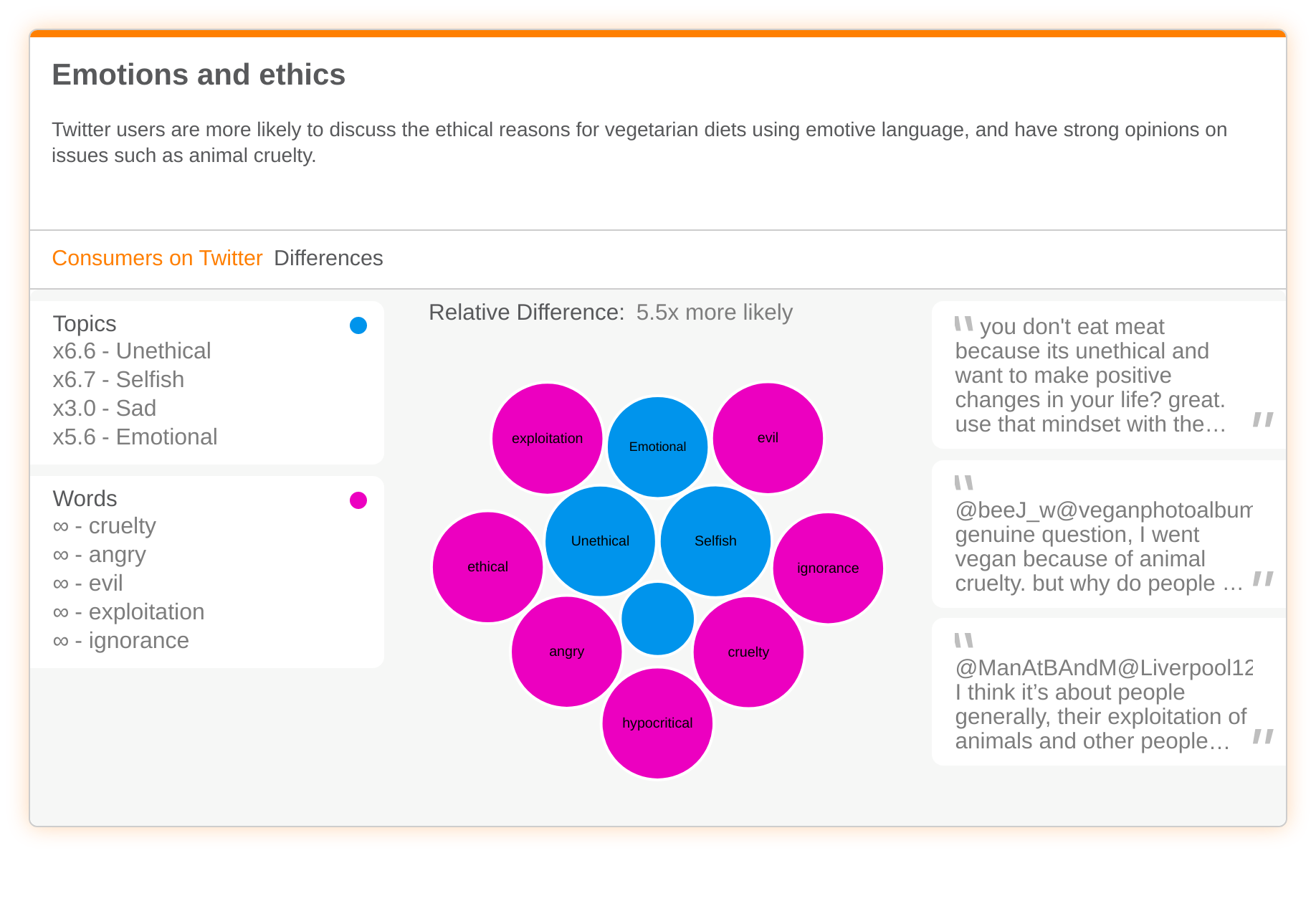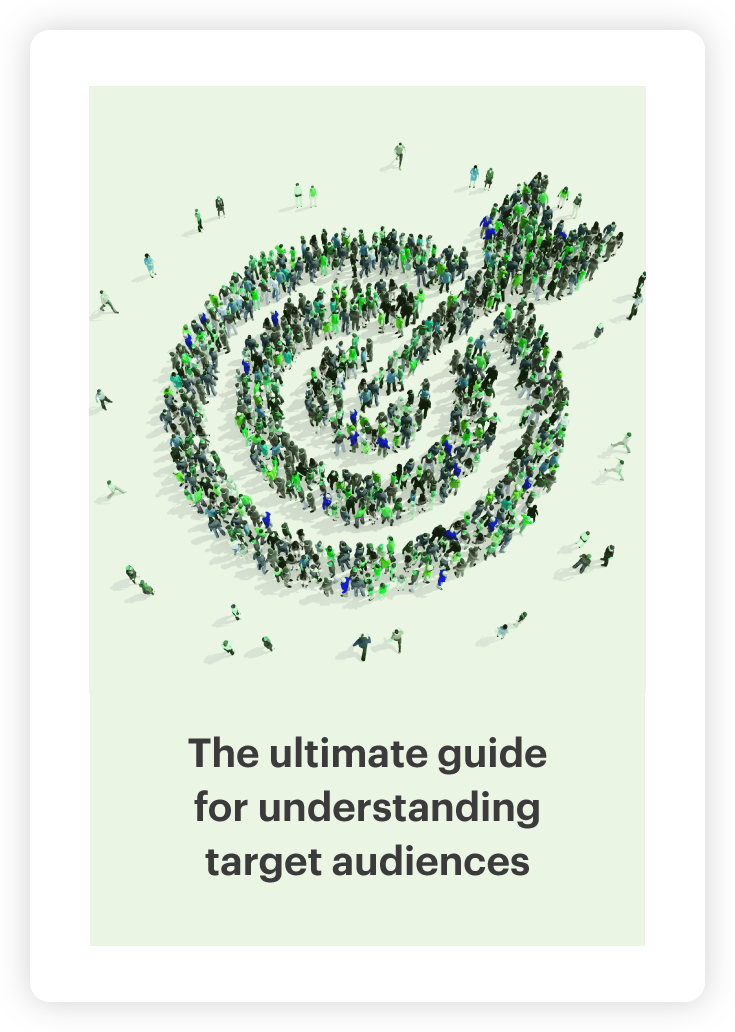Do brands and consumers speak the same language when it comes to plant-based diets?

Across the globe, an increasing number of people are choosing to follow a meat-free diet, whether that’s pescatarian, vegetarian, vegan or flexi.
As a result, the market for plant-based food brands is soaring. Even top supermarkets have launched their own vegan ranges. But as the vegetarian lifestyle becomes progressively trendier, are brands and consumers speaking the same language?
To find out, we used language comparison. Firstly, we took all the brand messaging from the websites and social media of three popular vegetarian food brands – Linda McCartney, Quorn and Oumph. Secondly, we pulled organic Twitter conversations specifically around “plant-based diets” which spanned over the last six months.
Using Relative Insight, we compared the generic conversation around “plant-based diets” to each individual brand voice, to determine whether brand content aligned with user generated content. By analysing both brand voice and consumer voice, we identified the linguistic differences and similarities in how each audience talks.
Linda McCartney
Taste, recipes and flavour
The Linda McCartney food range has been around since 1991, but is also one of the fastest growing plant brands in 2020. Famous for delicious veggie sausages, we found that throughout brand messaging Linda McCartney was 10.7x more likely to place emphasis on wholesome recipes and recipe inspiration, tempting their audience to try something new.
Continuing with the food focus, Linda McCartney was also 6.4x more likely to use adjectives that described flavours. Moreover, the brand’s use of appetising words such as tasty, delicious and delish helps to bring the food to life.
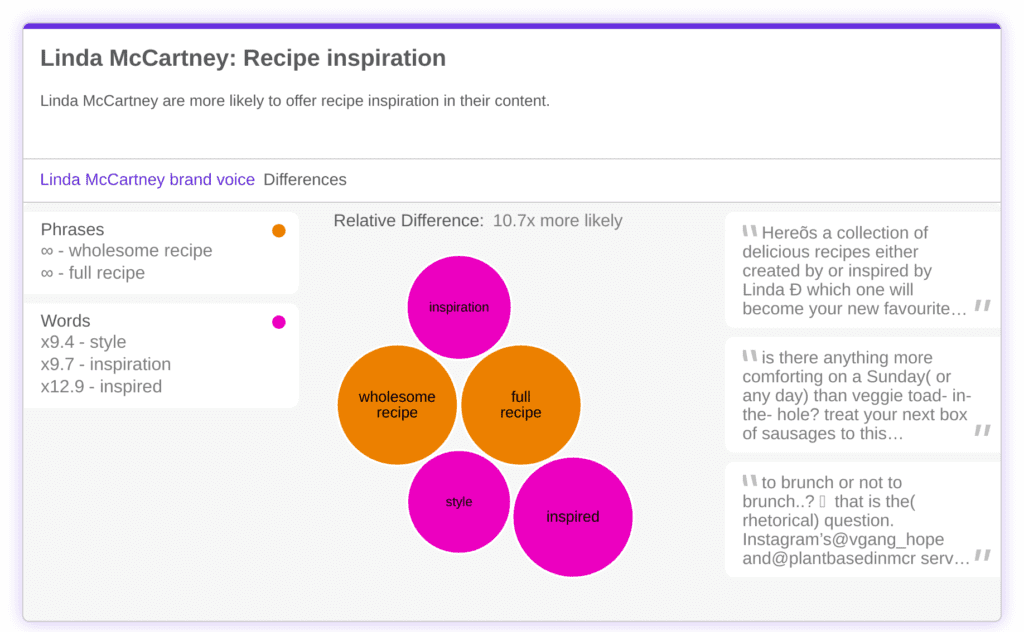

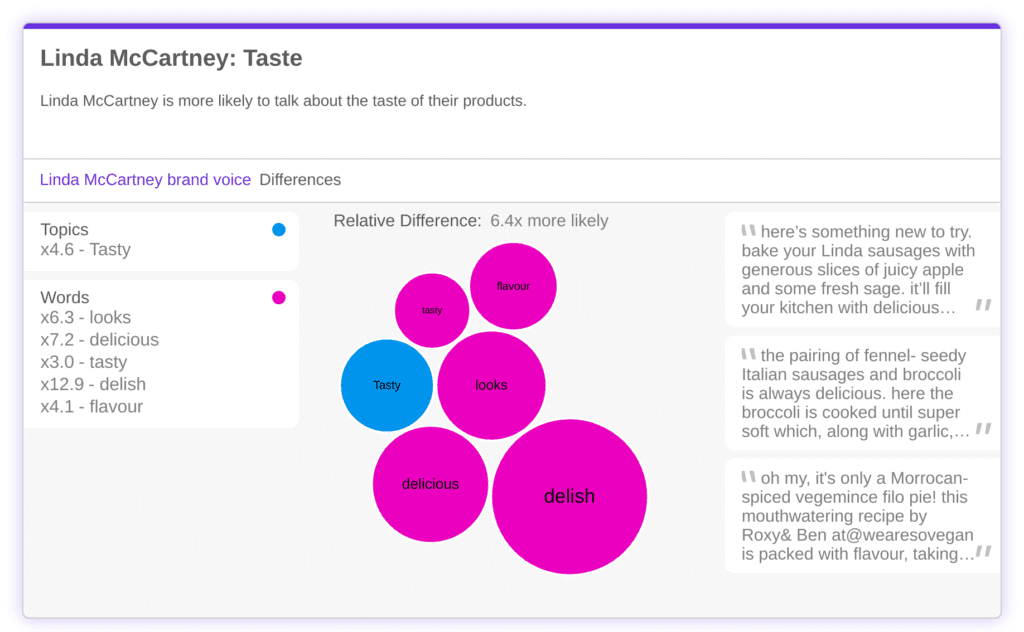

Health benefits of a plant-based diet
In comparison to Linda McCartney’s brand voice, Twitter users were 3.3x more likely to talk about the health benefits of a plant-based diet. People referenced health, vitamins and medical benefits as a key factor for why they chose to replace meat. Linda McCartney could benefit from health-focussed content on their website, sharing the nutritional value of plant-based products.
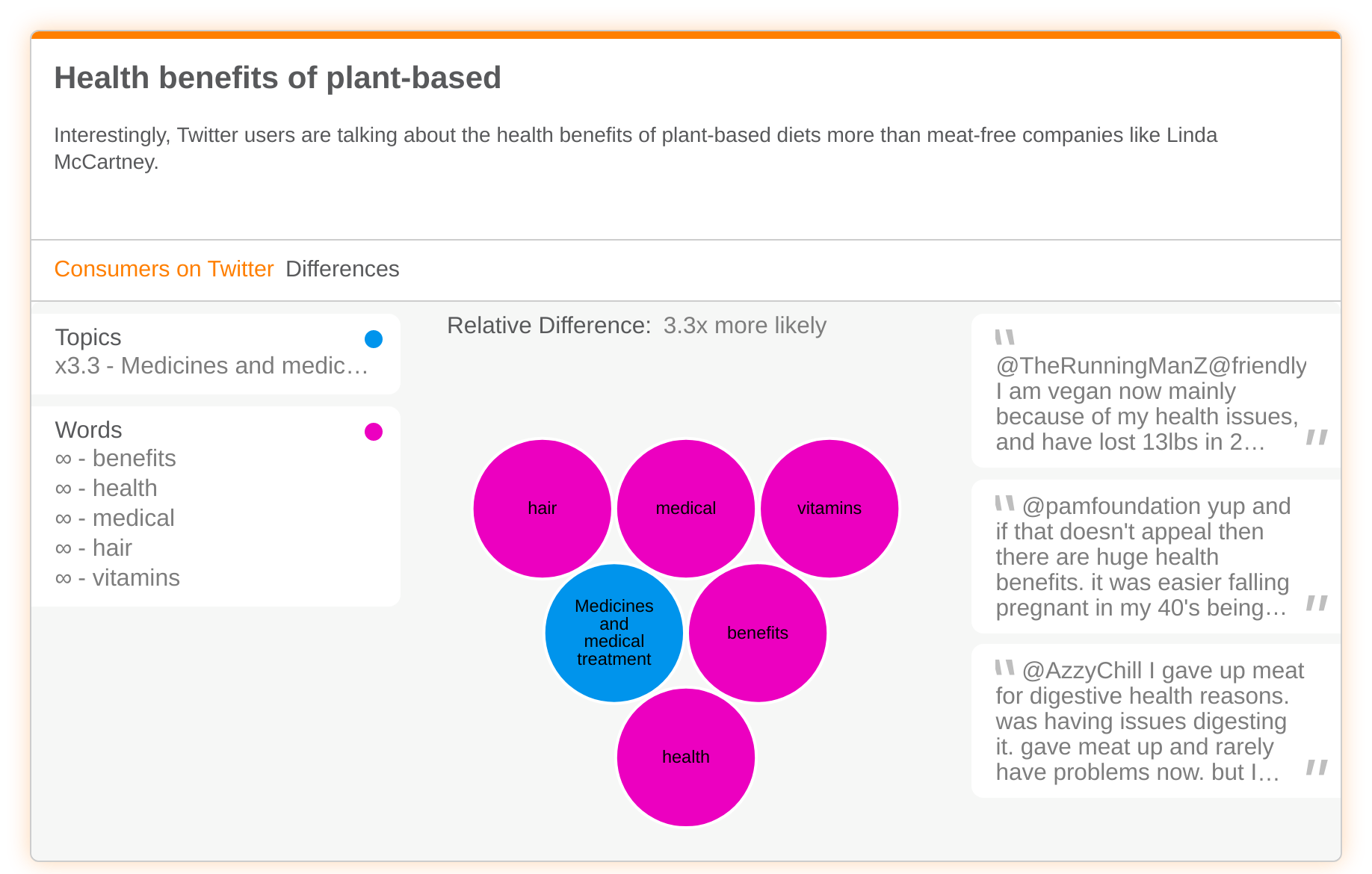

Change
An interesting similarity between the two channels was that Linda McCartney and Twitter users were equally as likely to discuss change in relation to vegetarian diets. One Twitter user wrote: “The plant based movement will change humanity into compassionate existence.” In comparison, Linda McCartney almost mirrors this in their web copy: “You can change the world. It’s kind to listen. It’s kind to learn. It’s kind to act. It’s kind to speak up.”
The brand aligns with their core audience by using similar inspirational language. Linda McCartney highlights that plant-based diets have the ability to change the environmental issues facing our planet.
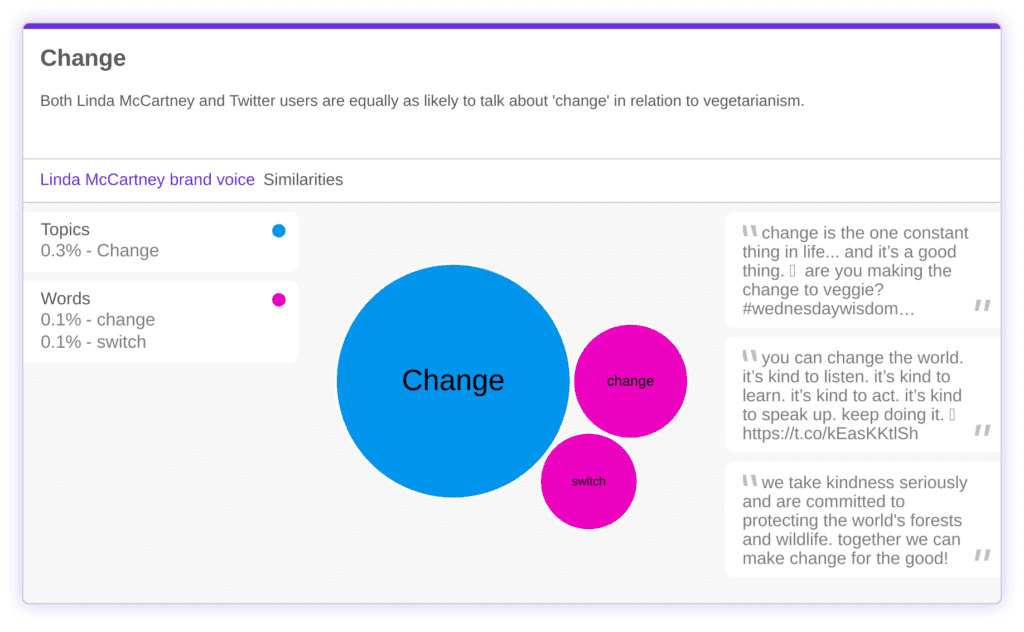

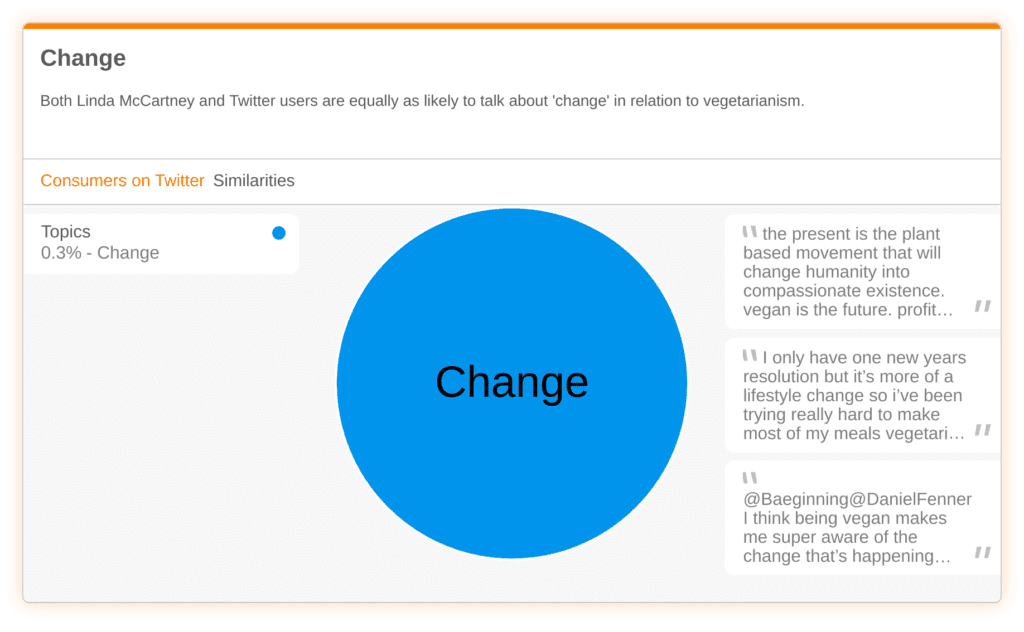

Oumph
Young tone of voice
Young people are leading the sustainable revolution in more ways than one. For instance, Gen Z (or those aged 18 to 23) are currently the most meat-free generation in Britain, and Oumph are using this to their advantage. They adopt a quirky tone of voice and use ‘young’ language to appeal to their biggest audience. Words such as awesome, yay and the phrase you rock appears 38.4x more than in Twitter conversations.
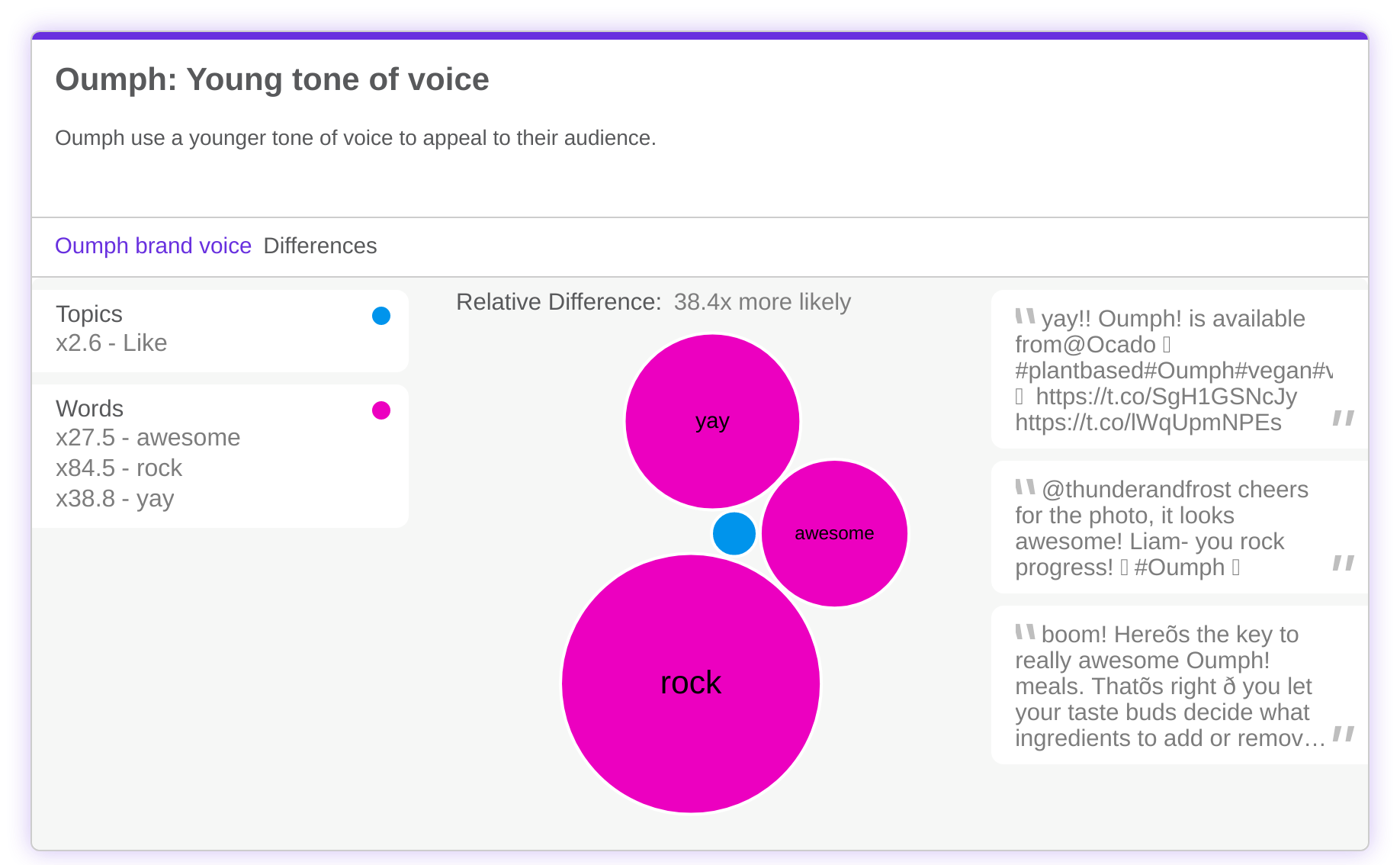

Environmental impact
It’s no secret that the meat and dairy industry has severe negative effects on the environment, accounting for 14.5% of global greenhouse gas emissions. Oumph are 46.3x more likely to talk about this, setting out their mission to drastically decrease our climate impact through plant-based living. Many people’s reasoning for adopting a vegan lifestyle is due to the environment, so by including this topic in their brand communications, Oumph clearly align with their audience’s beliefs.


Humans
A linguistic insight that really stood out was the use of the word humans by Twitter users, a word which was completely absent from all three brands’ messaging. As compassion for animals is a popular reason for becoming vegetarian, using the word humans highlights the fact that we too are animals. People on Twitter close the gap between them and us, animal and man. Brands could tap into this sentiment to reach a larger audience.
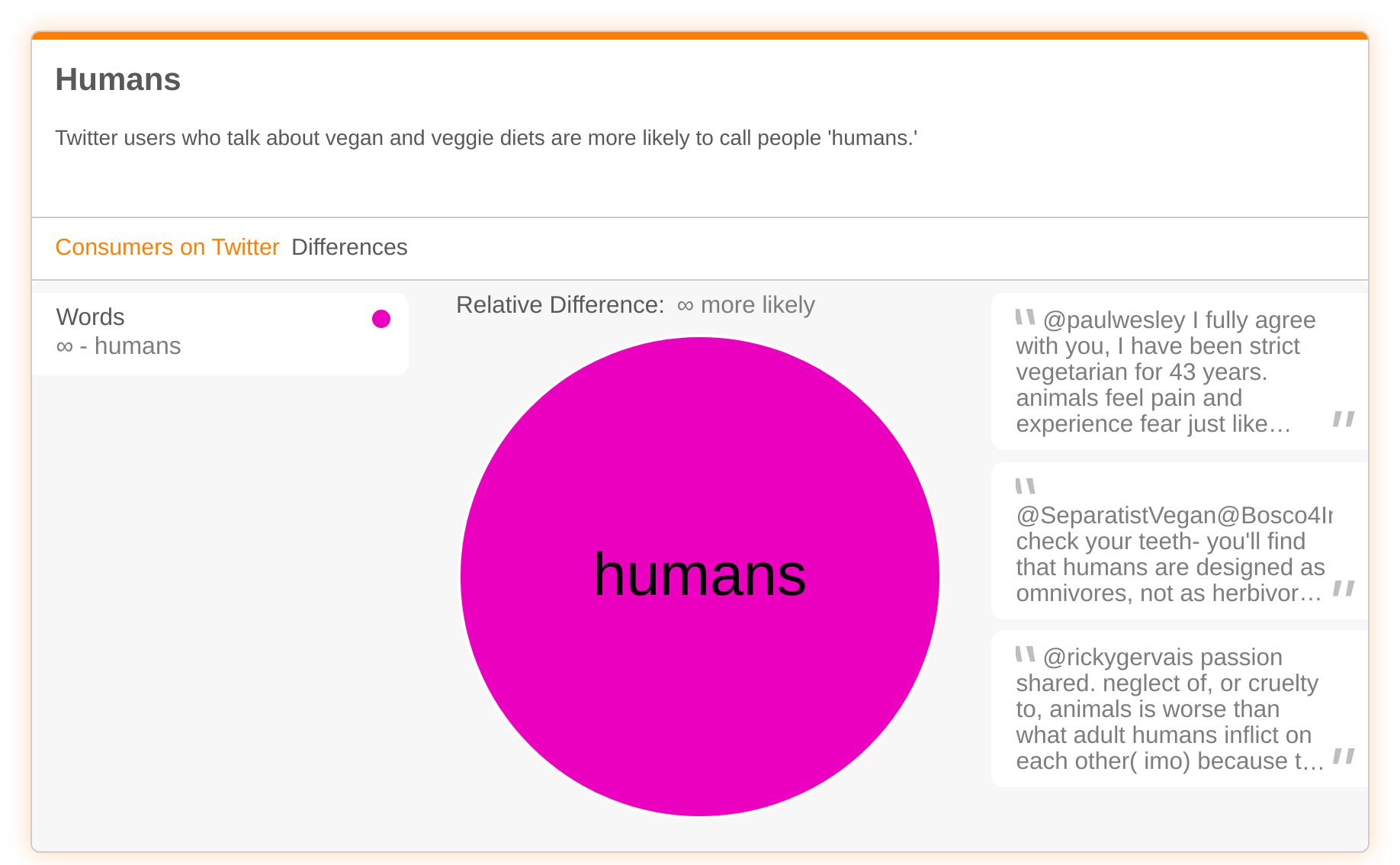

Quorn
Scientific and sustainable
Quorn’s brand voice is scientific and factual, especially when discussing sustainability and carbon emissions. Mathematical words such as calculate, numbers and maths appear 28.9x more throughout their branding. This shows that Quorn rely on facts and figures to encourage people to reduce their meat consumption.
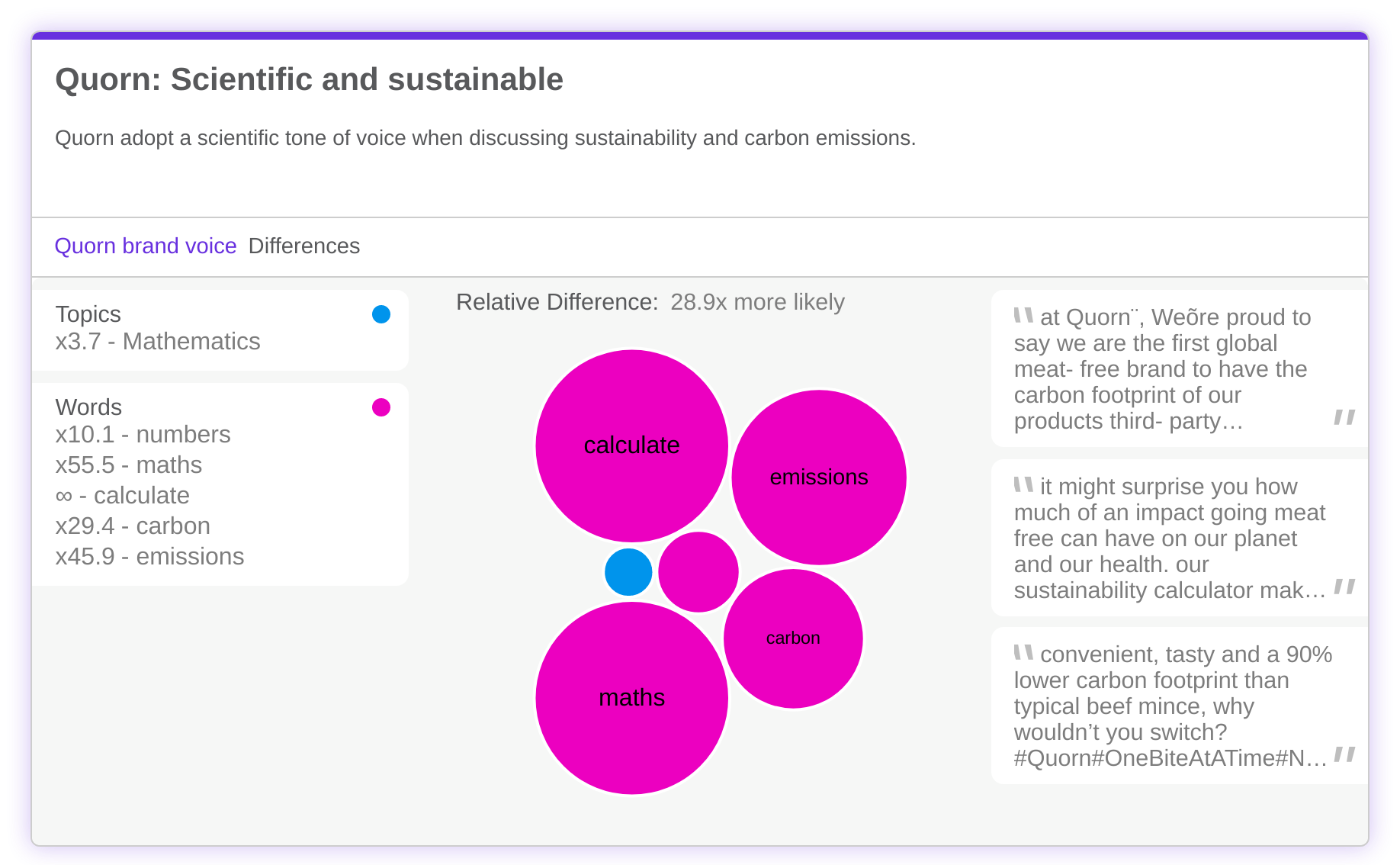

Emotions and ethics
However, despite Quorn placing a lot of emphasis on sustainability, Twitter users are much more likely to express their emotions when talking about the ethics of meat-free diets. For instance, emotive language such as sad, emotional, selfish, angry, hypocritical is used 5.5x more by Twitter users. Generally, people on Twitter are more likely to express their opinions and feelings than brands. However, Quorn could adapt their already scientific voice to include emotive language which is more in line with their target audience.
